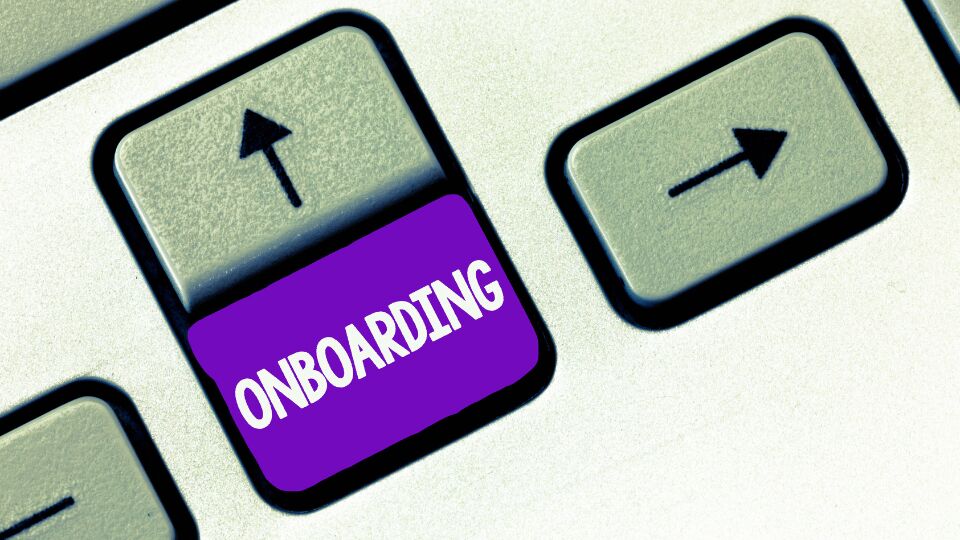Businesses need to seek ways to improve efficiency and productivity continuously. One area for optimization is the employee onboarding process. Traditionally, onboarding has been a manual and time-consuming process, often leading to frustrated new hires and overloaded HR teams. Thankfully, automation is changing the game, offering a streamlined and efficient alternative.
Understanding Onboarding Automation and its Benefits
Onboarding automation involves leveraging technology to automate repetitive tasks and workflows throughout the onboarding journey. This can include everything from sending automated welcome emails and document requests to scheduling training modules and generating employee accounts. By automating these tasks, organizations can free up valuable time for HR teams to focus on more strategic initiatives.
The benefits of onboarding automation are numerous and far-reaching. Some of the most significant advantages include:
- Improved employee retention: Studies have shown that a positive onboarding experience can significantly increase employee retention rates. Automation helps ensure that new hires feel welcome, informed, and supported from their first day, leading to a stronger commitment to the company.
- Reduced operational costs: Automating manual tasks saves time and resources for HR teams, leading to reduced operational costs. Additionally, automated systems can help eliminate errors and inconsistencies, further streamlining processes and saving money.
- Faster onboarding time: With automation, new hires can access necessary information and complete essential tasks much faster, allowing them to become productive members of the team sooner. This can lead to increased productivity and improved overall business performance.
- Enhanced engagement and satisfaction: Automated processes can provide new hires with a more engaging and interactive onboarding experience. This can be achieved by utilizing gamification elements, personalized learning modules, and automated feedback loops, ultimately leading to higher levels of employee satisfaction.
Related: What are the 4 Phases of Onboarding? A 2024 Guide to the Employee Journey
5 Effective Tips for Automating Your Onboarding Process
Implementing an automated onboarding system doesn’t have to be a daunting task. By following these 5 tips, you can effectively streamline your process and maximize its benefits:
1. Manage Your Data Using a Unified System
Implement a central repository for all employee data, documents, and workflows. This can be a cloud-based HR management system or a dedicated onboarding platform. Having all information readily accessible in one place streamlines data management and facilitates seamless automation.
2. Automate Document Delivery and Completion
Eliminate manual paperwork by automatically sending and collecting necessary forms electronically. This can be achieved through e-signature platforms and secure online portals, allowing new hires to complete paperwork at their convenience and reducing the risk of errors.
3. Simplify Account Generation and Provisioning
Automate account creation across different systems and platforms to grant new hires immediate access to essential tools and resources like email, collaboration platforms, and project management systems. This eliminates manual account setup tasks for IT teams and allows new hires to start working productively without delay.
4. Automate Training and Knowledge Testing
Use online modules and assessments to deliver essential information and track employee progress. This can be done through learning management systems (LMS) that offer interactive courses, quizzes, and simulations, ensuring consistent and efficient knowledge transfer.
5. Integrate a Feedback and Support Channel
Implement automated notifications and reminders to gather feedback from new hires throughout the onboarding process. This can be achieved through surveys, chatbots, or internal communication platforms, allowing HR teams to identify and address any concerns or issues promptly.
Related: Gamify Your Onboarding: 12 Ways to Make it Fun and Creative
Addressing Concerns about Automation vs. Human Interaction
A common concern surrounding automation is that it removes the human element from onboarding and ultimately leads to a less personal experience for new hires. However, this is not necessarily the case. Automation should be seen as a tool to improve efficiency and consistency, not replace human interaction.
In fact, by automating administrative tasks, HR teams are freed up to focus on more personalized interactions with new hires. This can include one-on-one meetings, mentorship programs, and team-building activities, fostering a welcoming and inclusive environment that promotes employee engagement and satisfaction.
Tools and Technology: Exploring Popular Solutions for Onboarding Automation
The landscape of onboarding automation tools is brimming with options, each offering a unique portfolio of features and functionalities. Choosing the right technology depends on your specific needs and budget. Here, we explore some popular solutions across different categories:
HR Management Systems (HRMS): These comprehensive platforms often include onboarding modules alongside features like payroll, benefits administration, and talent management. Popular examples include BambooHR, Gusto, and Workday.
Learning Management Systems (LMS): These platforms excel at delivering online training content, assessments, and certifications. Look for options like iSpring Learn, Absorb LMS, and Saba Cloud LMS.
Onboarding Platforms: These dedicated solutions are specifically designed to streamline the entire onboarding process, offering features like document management, task automation, and progress tracking. Examples include Onboarding.com, WorkBright, and Trakstar Learn.
E-signature platforms: These tools facilitate secure electronic document signing, eliminating the need for paper-based forms. Popular options include DocuSign, Adobe Sign, and HelloSign.
Collaboration Platforms: These platforms promote communication and collaboration among team members, allowing new hires to connect with colleagues and access team resources. Consider tools like Slack, Microsoft Teams, and Google Workspace.
Chatbots: These AI-powered programs can answer new hires’ questions and provide support 24/7. Some popular choices include Drift, Ada, and HubSpot Chat.
Performance Management Software: These tools track employee performance and deliver feedback, helping new hires understand expectations and adjust accordingly. Examples include Namely, Lattice, and 15Five.
Feedback Management Software: These platforms collect and analyze employee feedback, enabling HR teams to identify areas for improvement and refine the onboarding process. Some popular options are Culture Amp, Qualtrics, and Glint.
Integrations: Many onboarding solutions offer seamless integration with existing HR systems and tools, enabling a unified and streamlined experience. Consider platforms with robust API capabilities and a wide range of integrations.
Related: How to Onboard an Executive: The Essential Guide
Conclusion
Onboarding automation is a powerful tool that can significantly improve the employee onboarding experience, leading to a range of benefits for both individuals and organizations. By implementing the tips outlined in this article, businesses can create a seamless and efficient onboarding process that ensures new hires feel welcome, informed, and supported from day one.
Related: The Digital Onboarding Revolution: Transforming the Employee Experience
FAQs: Addressing Common Concerns about Onboarding Automation
While the benefits of automation are undeniable, some concerns often arise regarding its impact on the onboarding process. Here, we address some frequently asked questions:
Will automation dehumanize the onboarding experience?
Automation is not meant to replace human interaction but rather to enhance it. By automating repetitive tasks, HR teams have more time to focus on personalized interactions with new hires, fostering stronger relationships and building a welcoming environment.
What happens to compliance requirements?
Automation can actually improve compliance by ensuring consistency and accuracy in completing required tasks and documentation. Additionally, many onboarding platforms offer features specifically designed to facilitate compliance with relevant regulations.
Can automation adapt to different onboarding needs?
A: Many onboarding solutions offer customizable features and workflows to cater to diverse organizational structures and employee roles. Additionally, integrations with other systems allow for tailoring the onboarding experience to specific needs.
What about security and data privacy?
Choosing a reliable solution with robust security features is crucial. Look for platforms that comply with industry standards and employ advanced data encryption protocols to safeguard sensitive information.
Can small businesses afford onboarding automation?
Several affordable onboarding solutions are available, catering to the needs and budget constraints of small businesses. Additionally, many platforms offer tiered pricing plans, allowing businesses to scale their automation as needed.
How can I measure the success of onboarding automation?
Utilize key metrics like time to productivity, employee satisfaction, and retention rates to track the effectiveness of your automated onboarding program. Regularly analyzing these metrics will allow you to refine your strategy and maximize the benefits of automation.
By understanding these common concerns and exploring the available tools and technology, organizations can confidently embrace onboarding automation and unlock its potential for creating a seamless, efficient, and ultimately more rewarding experience for both new hires and HR professionals.
- The Essential Connection: Unraveling How Onboarding Influences Retention - January 4, 2024
- How to Recruit Top Talent: Strategies for Attracting and Hiring the Best Candidates - January 4, 2024
- Finding the Right Remote Job Recruiter - January 4, 2024



